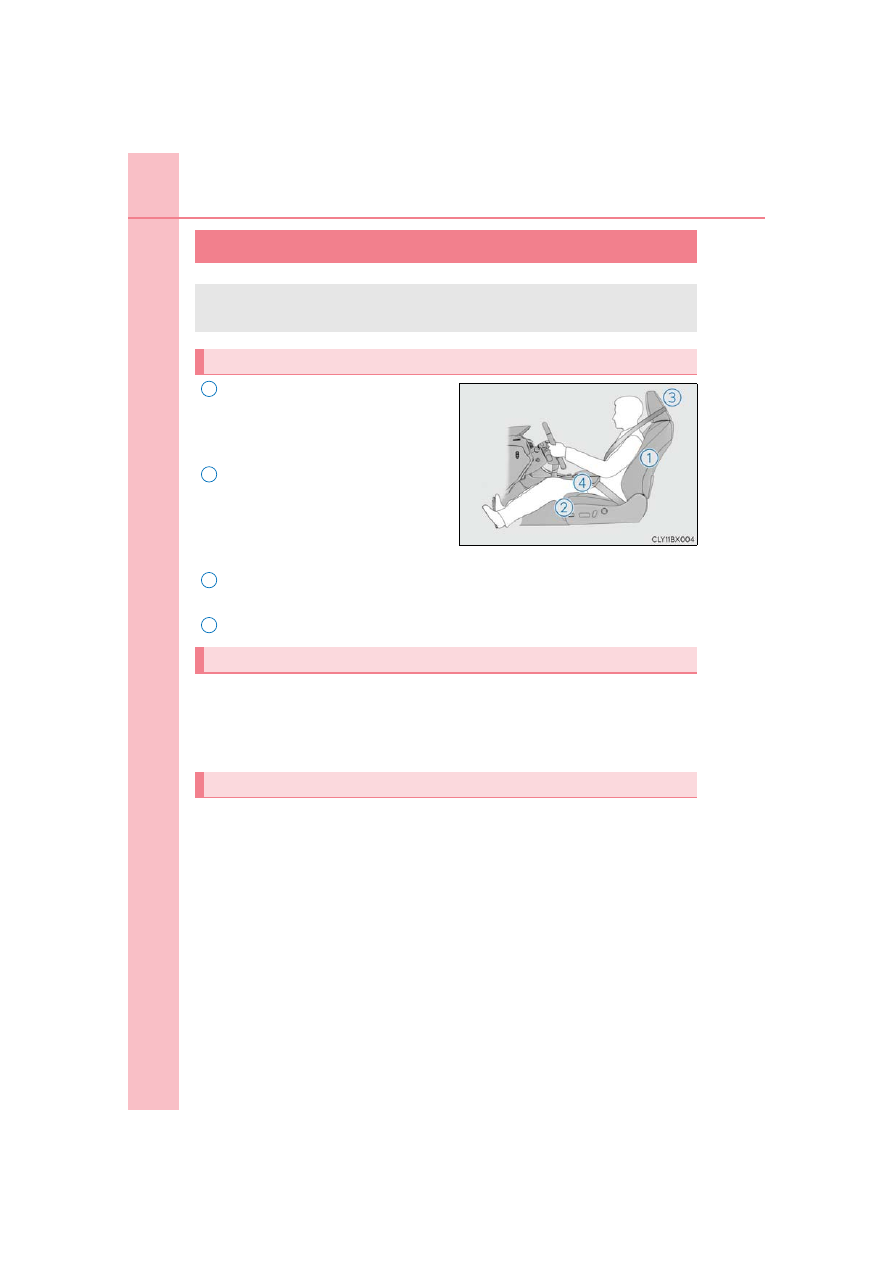LEXUS RX 350 L (2019 year). Instruction - part 2

30
1-1. For safe use
RX350/RX350L_U
Adjust the angle of the seatback so
that you are sitting straight up and so
that you do not have to lean forward
to steer. (
Adjust the seat so that you can
depress the pedals fully and so that
your arms bend slightly at the elbow
when gripping the steering wheel.
(
Lock the head restraint in place with the center of the head restraint closest to
the top of your ears. (
Wear the seat belt correctly. (
Make sure that all occupants are wearing their seat belts before driving the vehi-
cle. (
Use a child restraint system appropriate for the child until the child becomes
large enough to properly wear the vehicle’s seat belt. (
Make sure that you can see backward clearly by adjusting the inside and outside
rear view mirrors properly. (
For safe driving
For safe driving, adjust the seat and mirror to an appropriate position before
driving.
Correct driving posture
1
2
Correct use of the seat belts
Adjusting the mirrors
3
4